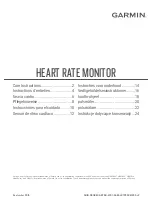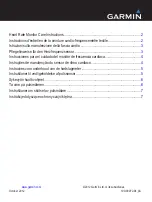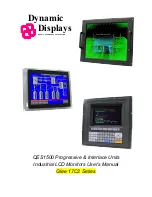
Overlaying a hard-coated, conductive polyester top sheet 1/10,000-inch on a conductive
clear glass sensor makes resistive touchscreens. When the surface of this flexible,
polished-finished polyester sheet is touched, it's compressed into contact with the stable
glass sensor. When contact is made, voltage flows to each of the four corners in
proportion to the distance from the edge. As in capacitive technology, the controller uses
the current flows from along the X-Y axis to calculate the position of the touch, and via
the software driver, communicates this as input to the computer's serial port.
The flexible top sheet enables the touch to be registered by any input, including gloved
hand, fingernail, stylus or credit card. Because the touch is actually registered on the
stable glass bottom layer, the touchscreen continues to operate even if the top sheet is
accidentally torn. The versatility of this resistive technology makes it ideal for many
industrial, point-of-sale and medical applications.
INFRARED
Infrared touchscreens are fabricated by adding a custom bezel (usually) to the front of a
CRT utilizing Infrared Light Emitting Diodes (LED) along the horizontal and vertical X-Y
axis. A touch breaks the X-Y LED beams and the sensors pass this coordinate information
to the computer serial port. While infrared was once used extensively as a touch solution,
shortcomings of this technology, i.e., low resolution, parallax problems and premature
touchdown detection has led developers to employ other touch technologies utilizing the
Windows3.1/95/98/NT
operating systems.
SAW (SURFACE ACOUSTIC WAVE) / GAW (GROUNDED ACOUSTIC WAVE)























